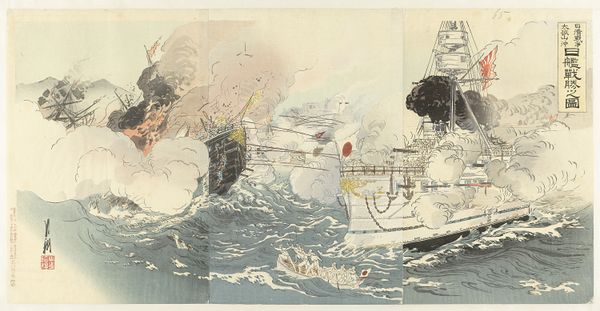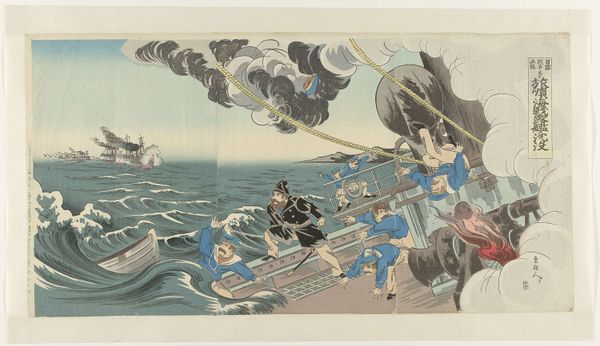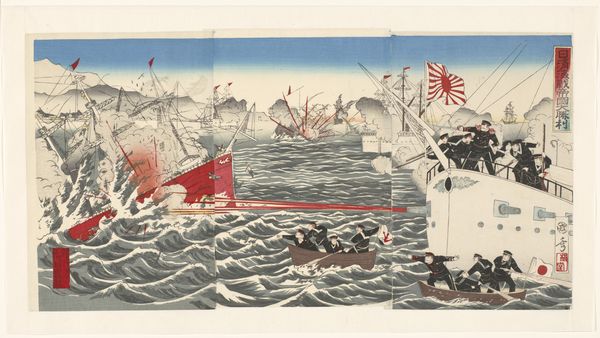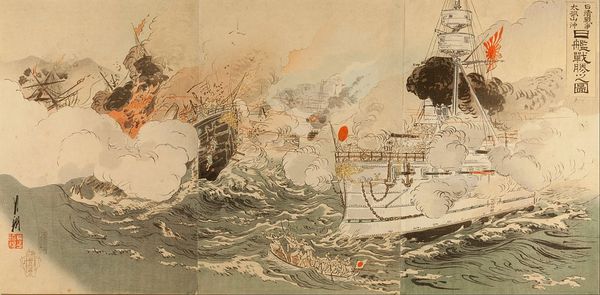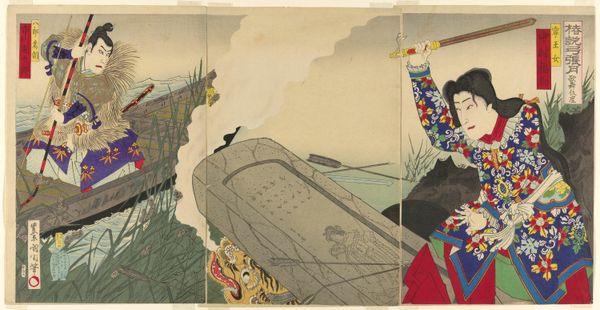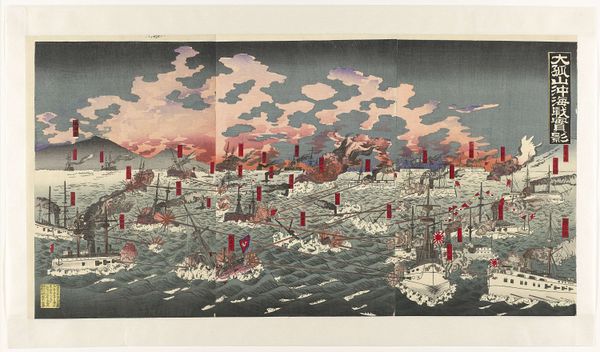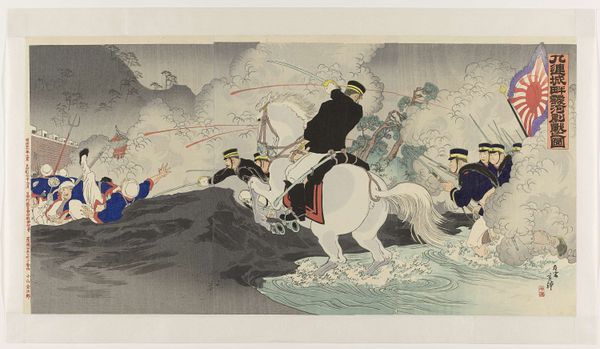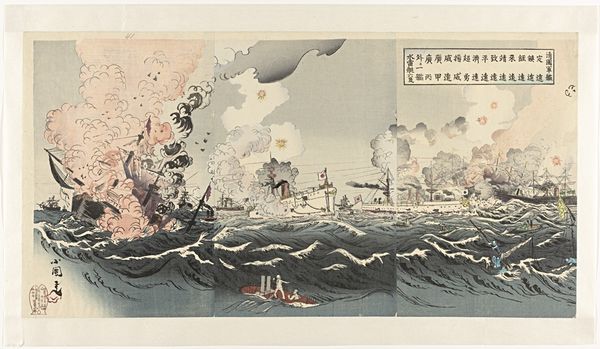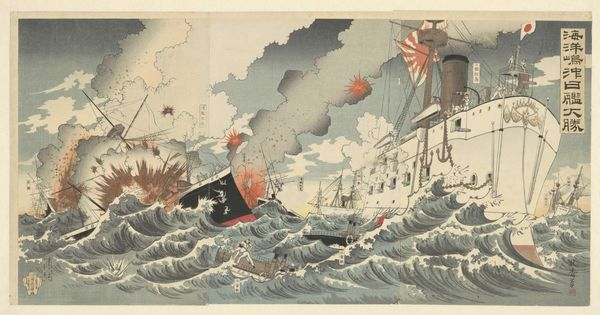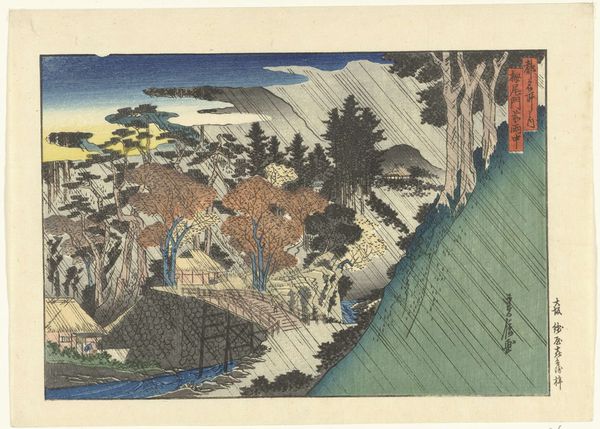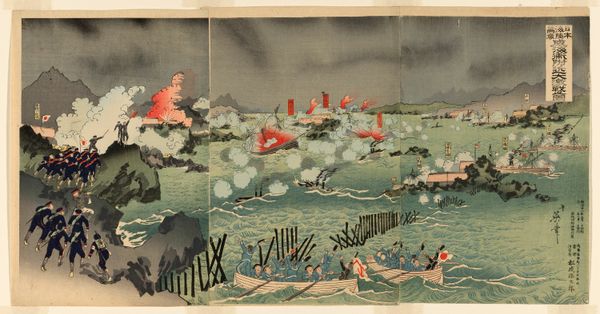
Dimensions: height 367 mm, width 722 mm
Copyright: Rijks Museum: Open Domain
Editor: This vibrant triptych, "A Pictorial Report of the Russo-Japanese War, Number One" by Tsukioka Kogyo, was created in 1904. It looks to be a woodblock print, and the scene is incredibly dramatic; ships firing at each other amidst huge plumes of smoke. It feels very propagandistic. What can you tell me about the history surrounding its creation and reception? Curator: You've hit on a key aspect of prints like these. They weren't simply aesthetic objects; they were instruments of public opinion. This print was produced during the Russo-Japanese War, a conflict that marked a significant moment for Japan as an emerging world power. The prevalence of Ukiyo-e, or "floating world prints," at the time meant this style became an ideal format for distributing patriotic imagery and wartime narratives. Editor: So it’s less about an accurate depiction and more about… shaping the narrative? Curator: Precisely. The image aestheticizes war, transforming the grim reality of battle into a spectacle of technological prowess. Note how the artist emphasizes the modernity of the Japanese fleet. Prints such as these served to mobilize public support, projecting an image of Japanese strength and valor both domestically and internationally. It’s worthwhile asking: Who was this *for*? Who did this print benefit most? Editor: That makes total sense. The focus is really on the visual spectacle and implied Japanese strength. I didn’t consider the international audience either; that adds another layer. I suppose I was expecting something more...critical? But I see the purpose now. Curator: Indeed, understanding the historical context and the socio-political function illuminates how these images functioned as agents within the theatre of war. Hopefully you'll never see 'history painting' the same way again. Editor: Definitely a new perspective! It’s fascinating how art can be so directly linked to national and even international political agendas. Thanks for shedding light on this.
Comments
No comments
Be the first to comment and join the conversation on the ultimate creative platform.
